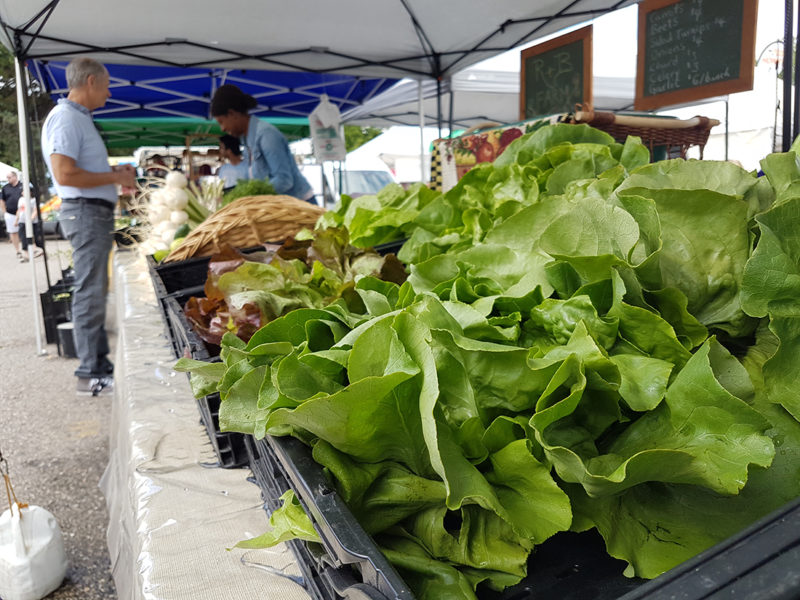DUNCAN – A six-member panel at a full-day event prior to the Islands Agriculture Show in Duncan on February 6 highlighted the complex and challenging nature of supporting local agriculture.
Expanding the Influence of Regional Agriculture Support, organized by the Alberni- Clayoquot Regional District, attracted 50 people to the Cowichan exhibition grounds for a morning panel discussion and afternoon workshop.
The event grew out of the regional district’s Systems Change project that seeks to develop a model for regional agriculture support.
The panel featured six representatives from the Kamloops Food Policy Council, Kootenay & Boundary Farm Advisors, Capital Regional District Food and Agriculture Initiatives Roundtable Society (CRFAIR), Lillooet Agriculture Food Society and the BC Ministry of Agriculture sharing their local experiences.
The discussion made clear that policies aimed at supporting local agriculture depend on a diverse set of individuals with grassroots connections in their communities and a variety of financial sources. There is no continuity in the support available across the province.
Heather Shobe, agricultural support worker with the Alberni-Clayoquot Regional District, chaired the event.
“At the regional level, these organizations that have come about have developed a high level of expertise and knowledge,” she says. “People want to work together, but they haven’t connected with one another very well.”
Part of the problem is a lack of core funding to support networking, says Shobe. Groups that have core funding have drawn it from a number of sources, either from their local governments, various provincial ministries, ministry-supported programs such as the BC Climate Action Initiative or the Young Agrarians.
Project-specific funding organizations include the Vancouver Foundation, Columbia Basin Trust and the BC Real Estate Foundation.
“Core funding allows that sort of networking and connections to happen more easily than specific project funding,” says Shobe. “It also provides a continuity to the local program. It is hard to make long-term plans if you are only working with contract funding.”
This lack of connection was one of the gaps identified throughout the day.
“We need to create a kind of home to do that,” says Shobe, noting that events like the Islands Agriculture Show are good opportunities to draw in people. “But we do see an opportunity for a person in a bridging role.”
Speakers outlined the wide variety of their work. Some are heavily involved in policy planning while others offer an advisory service. The majority focus on food systems work, including community food events, networking opportunities, how-to workshops, research, feasibility studies, agritourism development, supporting value-added opportunities and developing infrastructure such as aggregation systems.
All regions identified extension support as a pressing need.
“I hear a lot of farmers who just want someone to come onto their land and advise them,” says Linda Geggie of CRFAIR.
Searching for a unicorn
But finding an extension worker on a farm can be like searching for a unicorn, quipped Michele Bates, a land use planner from the East Kootenay Regional District.
“We first advertised for an agriculture liaison officer to provide business and technical support for everything from our cherry growers through to the cattle ranchers,” says Bates. “It wasn’t a surprise that we had no applicants.”
Dropping the business component, they re-wrote the competition into what is now the Kootenay & Boundary Farm Advisors program. It has logged more than 2,000 producer connections providing free technical support since it began two years ago.
“We heard that farmers don’t want to spend two hours on a website,” says Bates. “They want producer-to-producer connections with local expertise.”
A second need the group spoke about was aggregation services, specifically a food hub or a cooperative packing facility.
“I am seeing a number of small mixed farms in the Capital region making good money in direct sales,” says Geggie. “But they do not have a means of moving up to the next level.”
Alberni-Clayoquot Regional District has developed a food hub, but it’s focused on seafood. Kamloops is also running a food hub pilot.
Michelle Tsutsumi, communications lead with the Kamloops Food Policy Council, said the city has the oldest policy council in Canada. It operates many projects including Gleaning Abundance, a volunteer program that harvests local fruits and vegetables that might otherwise go to waste, and Pop Cycle, which delivers fruit pops, made when the gleaning project has too much fruit, by bike and trailer to the Kamloops Farmers’ Market and various festivals around the city.
Lillooet is looking at building a “Lillooet Grown” brand and setting up a cold storage facility and a permanent home for its farmers market.
The Capital Regional District has had a land-matching program for a number of years, Geggie says, and has run the successful Flavour Trails Program that brings about 3,000 visitors to 25 local farms through a weekend of activities each year.
“Everyone is just doing their best to cobble together whatever they can to take these things forward,” notes Geggie. “I admire the work that regional agrologists do, but there is so much more opportunity for greater collaboration between organizations that are supporting agriculture.”


 New round of traceability funding available
New round of traceability funding available